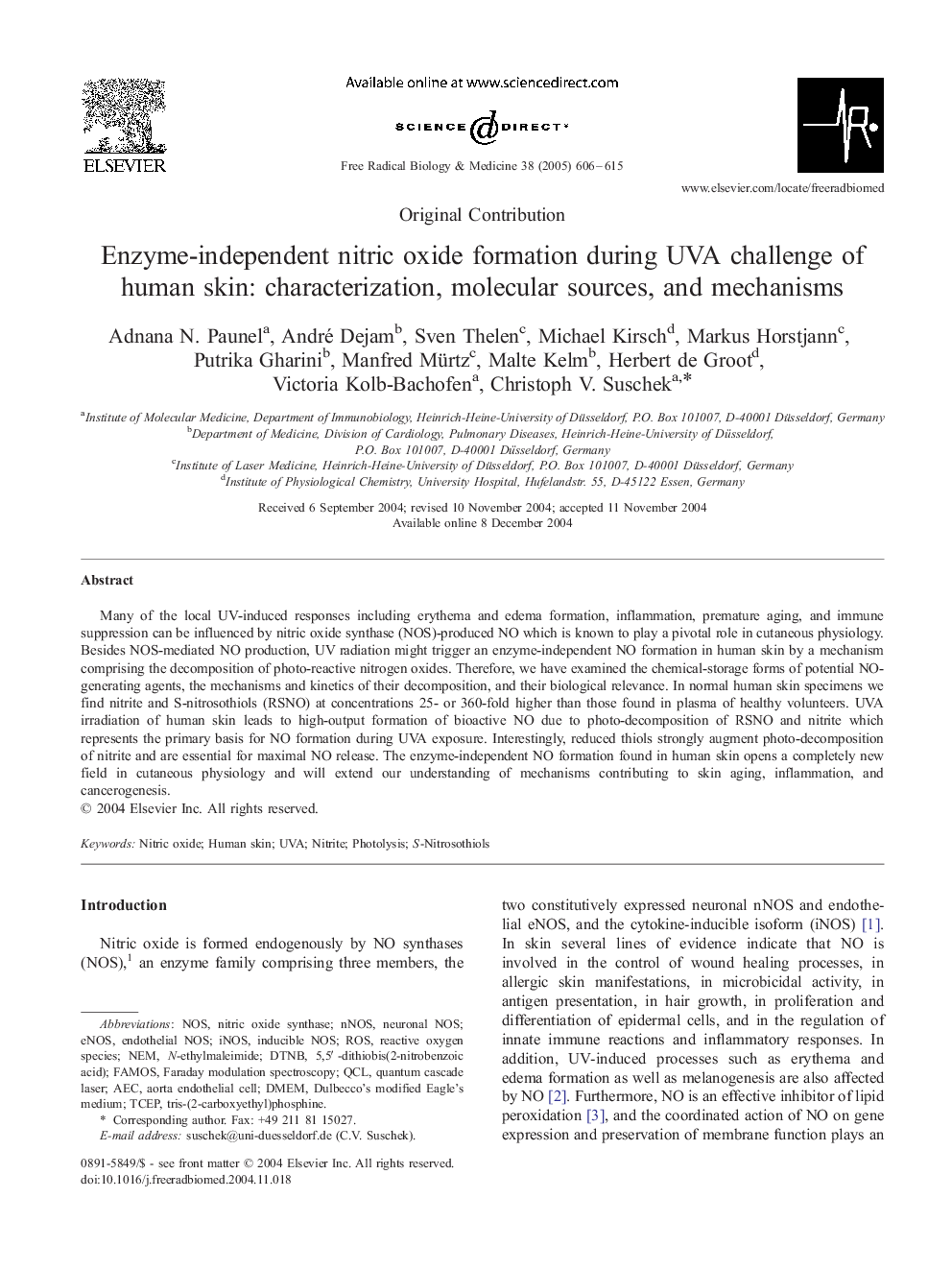| Article ID | Journal | Published Year | Pages | File Type |
|---|---|---|---|---|
| 10738857 | Free Radical Biology and Medicine | 2005 | 10 Pages |
Abstract
Many of the local UV-induced responses including erythema and edema formation, inflammation, premature aging, and immune suppression can be influenced by nitric oxide synthase (NOS)-produced NO which is known to play a pivotal role in cutaneous physiology. Besides NOS-mediated NO production, UV radiation might trigger an enzyme-independent NO formation in human skin by a mechanism comprising the decomposition of photo-reactive nitrogen oxides. Therefore, we have examined the chemical-storage forms of potential NO-generating agents, the mechanisms and kinetics of their decomposition, and their biological relevance. In normal human skin specimens we find nitrite and S-nitrosothiols (RSNO) at concentrations 25- or 360-fold higher than those found in plasma of healthy volunteers. UVA irradiation of human skin leads to high-output formation of bioactive NO due to photo-decomposition of RSNO and nitrite which represents the primary basis for NO formation during UVA exposure. Interestingly, reduced thiols strongly augment photo-decomposition of nitrite and are essential for maximal NO release. The enzyme-independent NO formation found in human skin opens a completely new field in cutaneous physiology and will extend our understanding of mechanisms contributing to skin aging, inflammation, and cancerogenesis.
Keywords
DMEMtris-(2-carboxyethyl)phosphineQCLS-nitrosothiolsAECnNOSeNOSiNOSDTNBNOSN-ethylmaleimideUVA5,5′-dithiobis(2-nitrobenzoic acid)Dulbecco's modified Eagle's mediumneuronal NOSinducible NOSROSendothelial NOSTCEPPhotolysisQuantum cascade laserNEMNitriteNitric oxidenitric oxide synthaseHuman skinReactive oxygen species
Related Topics
Life Sciences
Biochemistry, Genetics and Molecular Biology
Ageing
Authors
Adnana N. Paunel, André Dejam, Sven Thelen, Michael Kirsch, Markus Horstjann, Putrika Gharini, Manfred Mürtz, Malte Kelm, Herbert de Groot, Victoria Kolb-Bachofen, Christoph V. Suschek,
